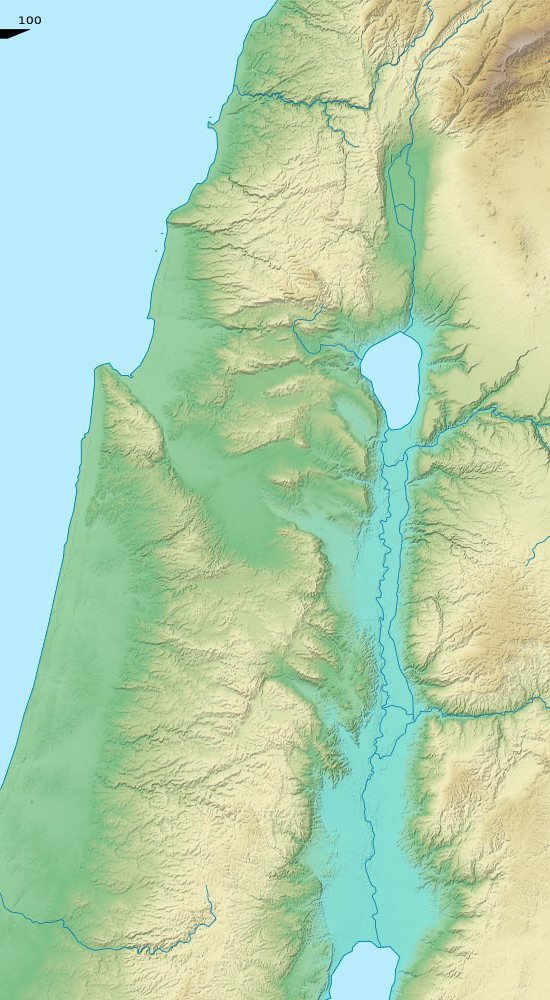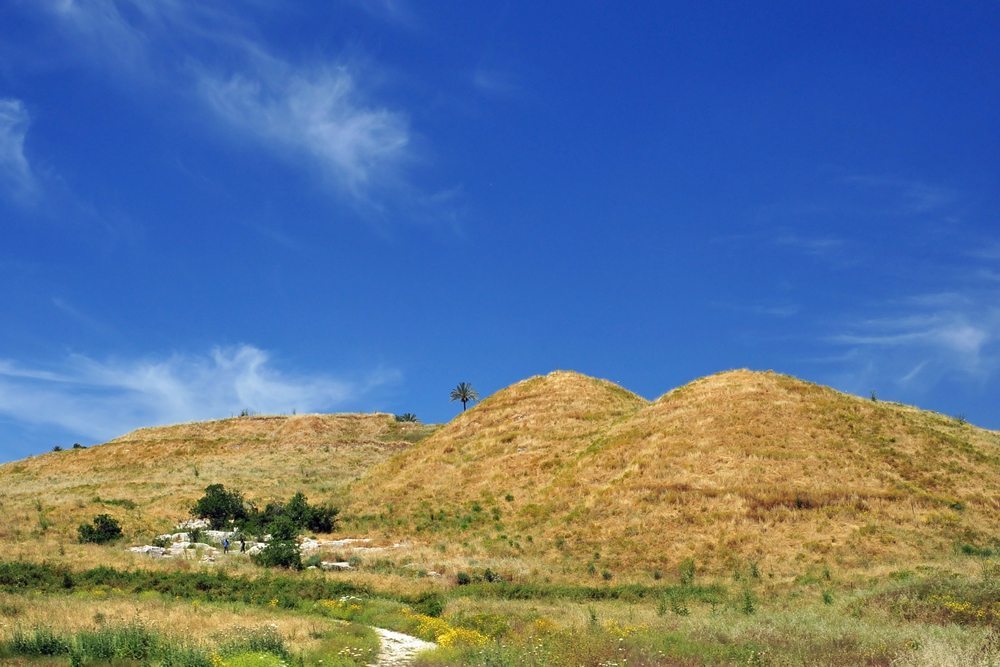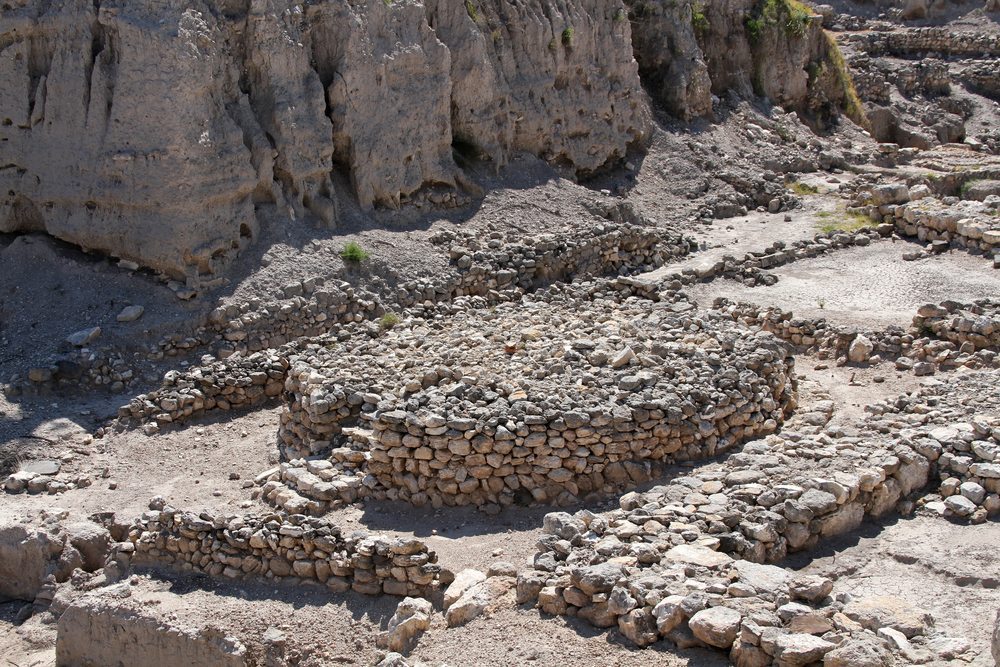The book of Deuteronomy, Moses’ farewell speech to the children of Israel, contains some of the most quoted passages in the entire Bible. Perhaps the most foundational text for Judaism is the Shema (“Hear O Israel”), the opening verses of the sixth chapter of the book.
Hear, O Israel: The Lord is our God, the Lord alone. You shall love the Lord your God with all your heart, and with all your soul, and with all your might. Keep these words that I am commanding you today in your heart. Recite them to your children and talk about them when you are at home and when you are away, when you lie down and when you rise. Bind them as a sign on your hand, fix them as an emblem on your forehead, and write them on the doorposts of your house and on your gates. (Deut. 6:4-9)
This is the most concise Jewish declaration of faith and a mandatory prayer recited twice every day (“when you lie down and when you rise”) by observant Jews. As seen in the photo above it is also handwritten by a scribe on a piece of parchment which is affixed to the doorposts of one’s home (“mezuzah”) as well as inserted into phylacteries which are bound to the arm and forehead (“tefillin”).

A Jewish man wearing tefillin, leather boxes containing the Shema and several other passages from the Torah.
But following this very famous instruction, Moses utters these much less famous words:
When the Lord your God has brought you into the land that he swore to your ancestors, to Abraham, to Isaac, and to Jacob, to give you—a land with fine, large cities that you did not build, houses filled with all sorts of goods that you did not fill, hewn cisterns that you did not hew, vineyards and olive groves that you did not plant—and when you have eaten your fill, take care that you do not forget the Lord, who brought you out of the land of Egypt, out of the house of slavery. (Deut. 6:10-12)
This is a difficult message to hear and, not surprisingly, these words are much less familiar to modern Bible readers. The Shema prayer skips over this passage and only resumes several chapters later in Deuteronomy 11. The lesson here is somewhat discomforting. Although God promised the Land of Israel to the People of Israel, it was inhabited by another people prior to the Israelites. This is a concept which the modern field of biblical archaeology has categorically confirmed. The original inhabitants of the Land, the Canaanites, built well fortified cities throughout the Land during the Bronze Age. Many of these cities became the chief Israelite cities in the Iron Age.
Among theses mighty Canaanite cities, perhaps the most prized was Megiddo. In the early 15th century BCE, the Egyptian Pharaoh Thutmoses III counseled his troops: “to conquer Megiddo is to conquer a thousand cities!”
Megiddo is found in a topographically ideal location, a high mound at the mouth of a crucial transit corridor. The most important international caravan route in the Near East, the “Way of the Sea” followed the Mediterranean coast until it ran into a major obstacle: Mount Carmel. This mountain ridge is a prominent extension of the northern Hill Country of Samaria that juts out to the west right into the Mediterranean Sea.

Mount Carmel, the tan colored “finger” that juts out into the Mediterranean Sea, interrupting the green colored Coastal Plain.
Because it is quite steep (1800 feet elevation), Mount Carmel is not easily climbed. Thus the Way of the Sea must leave the Coastal Plain and pass through Mount Carmel in order to get to Jezreel Valley. Megiddo is situated on a hill overlooking Nahal ‘Iron (Wadi ‘Ara), the most important mountain pass that cuts through Mount Carmel.
This means that almost any ancient caravan traveling from Egypt to Mesopotamia would have passed beneath Megiddo. Imagine the toll revenue for the ruler of this city! Ruling Megiddo meant controlling travel throughout the entire known world.
Because of its strength, the Israelites were not able to conquer Megiddo initially: “The kings came, they fought; then fought the kings of Canaan, at Taanach, by the waters of Megiddo; they got no spoils of silver.” (Judges 5:19). Eventually, it was conquered by the Israelites and became an important administrative center during period of United Monarchy. King Solomon enslaved many of his own people in order to fortify a small group of key cities:
This is the account of the forced labor that King Solomon conscripted to build the house of the Lord and his own house, the Millo and the wall of Jerusalem, Hazor, Megiddo, Gezer. (1 Kings 9:15)
Megiddo would play an important role in fall of the Davidic dynasty and the rise of Babylonians in the 6th century BCE:
In his days Pharaoh Neco king of Egypt went up to the king of Assyria to the river Euphrates. King Josiah went to meet him; but when Pharaoh Neco met him at Megiddo, he killed him. His servants carried him dead in a chariot from Megiddo, brought him to Jerusalem, and buried him in his own tomb.(2 Kings 23:29-30)
According to the book of Revelation the future eschatological “battle on the great day of God the Almighty” will take place at Armageddon. This is Har Megiddo, which means the “Mountain of Megiddo” in Hebrew. Given all the warfare that has taken place here over the ages, it is not surprising that the New Testament sees this site as the location of the final battle on the Day of Judgment.









A few years ago I was able to go to Israel with my church group and one of the places we visited was Megiddo and many other places. So it was interesting to see this. There is nothing that compares with a trip to the Holy Land. We were also able to go to Petra and of course all of the other regular places. A trip I will never forget. I wish every one could go. Just to know you walked where Jesus walked! I enjoy your studies & different articles that are published.
Wanda, so glad you were able to travel to Israel and Jordan. It’s an unforgettable experience!